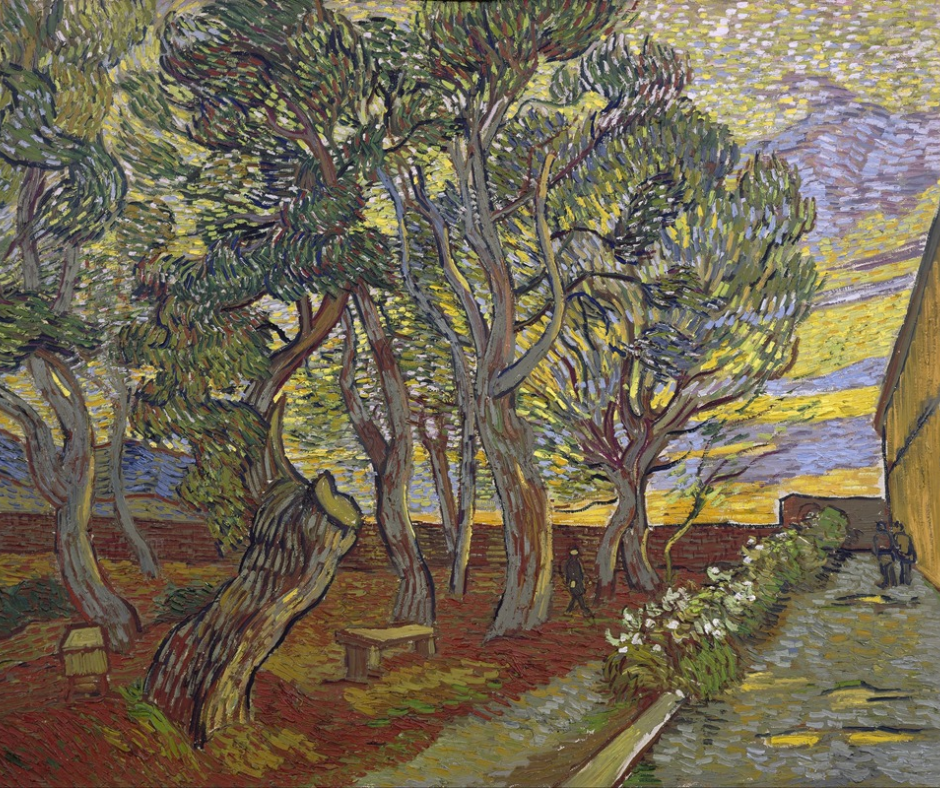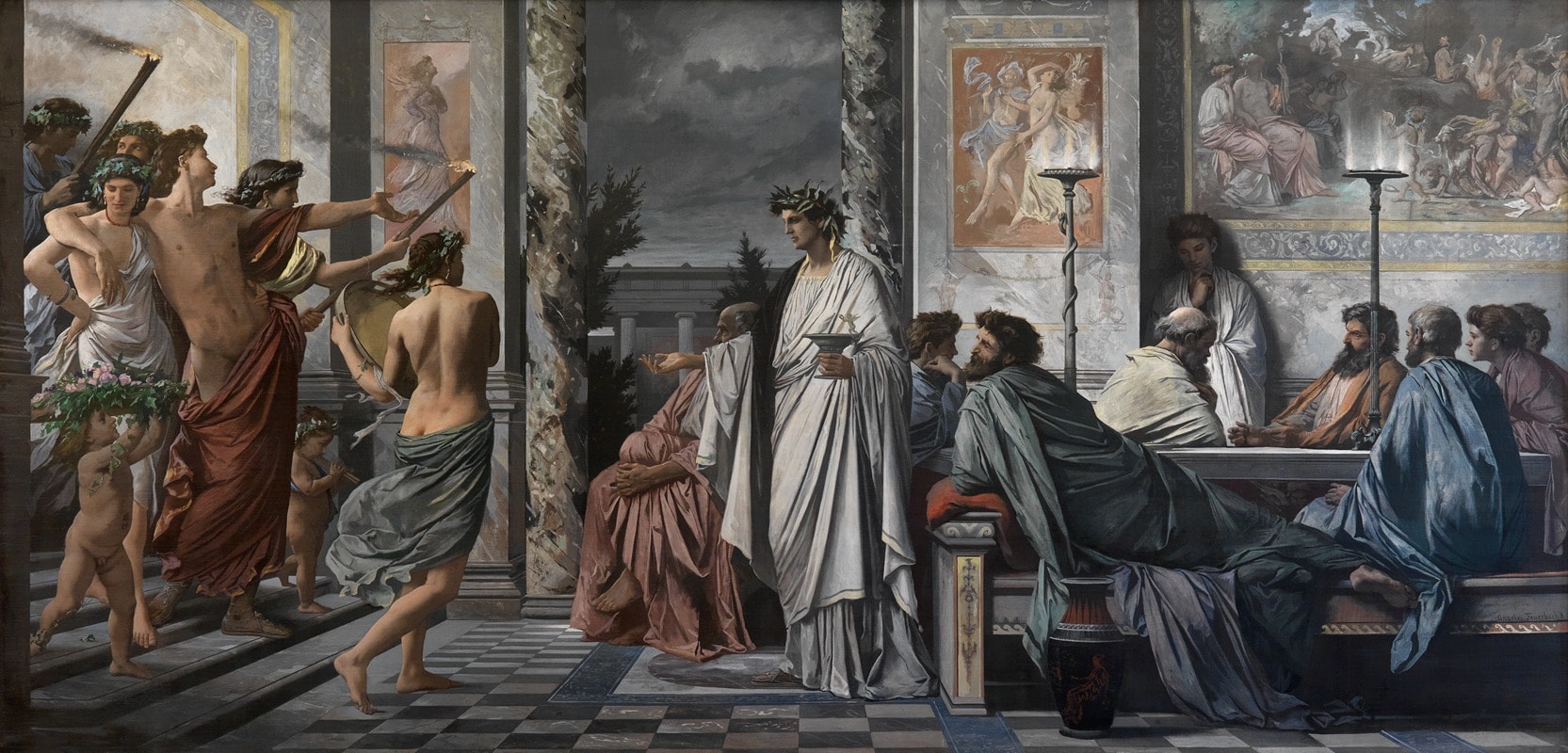

Wellbeing and Creativity: Examining the Tortured Artist Trope
Summary
This article explores the “tortured artist” trope, examining its historical and cultural roots from Plato’s concept of “divine madness” to modern depictions in media. It challenges the notion that suffering is essential for creativity, arguing instead that well-being can foster creativity. By highlighting examples of both tortured and joyful artists, it advocates for a balanced view that acknowledges diverse sources of artistic inspiration.
Reflection Questions
- How has the romanticization of the “tortured artist” impacted your perception of creativity and mental health?
- Can you think of contemporary artists who challenge the “tortured artist” stereotype? How do they inspire you?
- How might prioritizing well-being and mental health enhance your own creative process?
Journal Prompt
Reflect on a time when you felt particularly creative. What was your mental and emotional state? Consider how your well-being influenced your creativity and how you can cultivate a supportive environment for your artistic endeavors in the future.
Is artistic genius truly fueled by suffering? Must creativity be born from the depths of despair? For centuries, the “tortured artist” myth has permeated our cultural consciousness—romanticizing the idea that profound art emerges only from emotional torment while punishing those who match this stereotype. From Plato’s divine madness to the tragic lives of iconic figures like Van Gogh and Plath, this pervasive trope has shaped our understanding of artistic expression—for the worse. The self-care and work-life balance movements have led many creatives to question that centuries-old ideal. Is it a myth? Can joy, fulfillment, and even stability also spark and feed creativity? Let’s take a look.
Is Great Art Borne of Great Suffering? Does it Have to Be?
For centuries, we have fed into this long-standing idea that great art (whether creative writing, painting, or even math) is borne of great suffering. We tie it to many famous artists. This notion suggests that artists must endure horrific emotional or physical pain to produce profound and impactful works. We can trace this concept back through history, where it was often romanticized in literature, art, other creative fields, and popular culture.
Historical and Cultural Context for the Tortured Artist Trope


Let’s start with the ancient concept of “divine madness.” The concept of divine madness, or “mania,” was developed by the ancient Greeks—particularly by Plato who explored four types through his characters. In his dialogues, Plato described divine madness as a state of inspiration given by the gods. This form of madness was considered a source of profound creativity, insight, and prophecy.
According to Plato, it allowed individuals to transcend ordinary human experience and achieve extraordinary artistic creativity. For example, in the “Phaedrus,” Plato argued that divine madness could drive the soul to higher truths and artistic brilliance. He believed that some of the greatest achievements in art, poetry, and philosophy have arisen from this inspired state.
This idea has influenced many cultural and artistic traditions over the centuries. During the Renaissance, artists and scholars celebrated a connection between genius and that touch of madness. This view persisted into the Romantic era and has since seeped into our contemporary collective consciousness.
Of course, divine madness closely relates to the tortured artist stereotype. It romanticizes the suffering and mental turmoil of creatives. Some still argue that true artistic genius requires a break from conventional sanity and that extraordinary creativity comes only from experiencing and channeling profound inner turmoil. This belief has perpetuated the stereotype that great artists must endure personal suffering to produce their best work.
Later Examples of the “Tortured Artist”


Closer to modern times, we have Vincent van Gogh, Franz Kafka, Sylvia Plath, and many other creatives. Vincent van Gogh is remembered for his mental health struggles and poverty, which many believe contributed to the emotional intensity and unique vision of his paintings. In fact, his self-portrait with a bandaged ear is one of van Gogh’s most memorable pieces.
Filled with themes of alienation and existential dread, Franz Kafka’s works are frequently linked to his personal anxieties and difficult relationships. Sylvia Plath’s poetry and her novel The Bell Jar are now celebrated for their raw exploration of mental health struggles, which were shaped by her own experiences with depression.


The Romantic era of 18th and 19th century literature also heavily idealized the suffering artist—emphasizing the connection between emotional turmoil and creative genius. Lord Byron and Percy Bysshe Shelley epitomized this archetype—living tumultuous lives that were reflected in their passionate and introspective works.
This Romantic ideal of the suffering artist has since become deeply ingrained in Western cultural narratives—perpetuating the belief that personal pain is a wellspring of artistic brilliance. In modern media, movies, books, and biopics continue to depict artists as tortured souls whose pain fuels their creativity. Films like “Pollock” and “Basquiat” perpetuate the narrative that suffering is an essential component of artistic greatness.
But Don’t We Both Stigmatize and Romanticize the Tortured Artist?


Paradoxically, we both stigmatize and romanticize the “tortured artist” stereotype in our culture—punishing and celebrating people who fit it. These dual perspectives create a complex and often contradictory view of artists that can be quite harmful to the creatives themselves.
Stigmatization


People in creative professions who struggle with mental health issues were (and are) stigmatized. Let’s go back to van Gogh. While van Gogh’s contemporaries noticed his mental health issues, their reactions were mixed and often reflected the limited understanding of psychological conditions at the time. For example, van Gogh was hospitalized several times—including his well-known stay at the asylum in Saint-Rémy-de-Provence. His behavior—like the infamous incident where he cut off part of his ear—was seen as bizarre and alarming. It produced a mix of concern, fear, and misunderstanding from those around him. His intense, emotional nature and unpredictable actions contributed to his reputation as a troubled and unstable individual. This reputation overshadowed his artistic talents during his lifetime.
Van Gogh’s mental health struggles severely impacted his ability to sustain stable relationships and a successful career. Despite his prolific output and the support of his brother Theo, van Gogh sold very few paintings during his lifetime and often lived in poverty. His work was not widely appreciated or understood by the broader art community. It was only after his death that his art gained the recognition it deserved, and his struggles were reinterpreted through a more sympathetic and understanding lens.
Similarly, contemporary artists like Amy Winehouse have faced harsh public scrutiny and stigmatization for their battles with addiction. Her talent was often overshadowed by demeaning tabloid portrayals of her struggles. Even after her death, Winehouse was the focus of many cruel and unfair jokes.
Labeling Artists as Unreliable and Unstable


As with van Gogh, the stereotype of the tortured artist as unreliable and unstable can dampen trust in their capabilities. Take the playwright Tennessee Williams, for example. Known for masterpieces like “A Streetcar Named Desire,” Williams often faced doubts about his reliability due to struggles with addiction and depression. This public perception can limit opportunities, as seen with musician Kurt Cobain, whose erratic behavior due to his mental health issues led to challenges in his professional relationships and career stability.
Fuel your creative fire & be a part of a supportive community that values how you love to live.
subscribe to our newsletter
*please check your Spam folder for the latest DesignDash Magazine issue immediately after subscription


Putting “Tortured Artists” in a Tiny Box
Perhaps worse, the struggles of artists are sometimes marginalized. Their work and challenges might be undervalued or ignored compared to those perceived as more “stable” or conventional. The writer Sylvia Plath—whose work deeply explored themes of mental anguish—was often reduced to her depressive episodes rather than celebrated for her literary contributions. This marginalization can obscure the importance of their work and the depth of their experiences.
Romanticization


We also idolize the tortured artist. In fact, our culture celebrates anyone who pushes themselves to the brink of insanity in the pursuit of success or genius—who demonstrates superhuman stamina, embraces the struggle, burns the candle at both ends. This romanticization isn’t new.
Consider poet Edgar Allan Poe—whose troubled life is often seen as the wellspring of his dark, haunting poetry. The idea that great art emerges from great pain glamorizes artists’ suffering and suggests that their pain is necessary. Consider, too, how painter Frida Kahlo’s physical suffering and emotional turmoil are often portrayed as integral to her deeply personal and impactful art.
Now, this might have been true for both Poe and Kahlo, but it isn’t for all creatives. Suffering for your art is not necessarily a requirement (nor is it always productive).
The Tortured Artist as a Cultural Icon


Tortured artists are also idolized as cultural icons. For example, we find musician Jim Morrison fascinating not only because of his music but also for his wild lifestyle, substance abuse, and tragic early death at 27 years old. This idolization glorifies an incomplete image while overlooking the real suffering involved.
Ann Sexton is another example of this. Her struggles with mental illness (and possible misdiagnosis of bipolar disorder) and eventual suicide are often romanticized rather than viewed with empathy and understanding. Sexton’s mental health struggles were deeply painful and debilitating. Romanticizing them minimizes the very real suffering she endured.
So, Is It True? Does Suffering Produce Profound Art?
Critics of the tortured artist ideal argue that the idea of the suffering creative oversimplifies the complex processes behind artistic creation. It often ignores the discipline, study, and hard work that contribute significantly to great art. Plus, romanticizing suffering can be incredibly harmful. This myth can also encourage the public to neglect the mental health and support systems of artists. After all, it underplays the importance of wellbeing in sustaining a productive creative life.
Science does not support the idea that suffering is key to creativity. As Lizzie Ellis writes in this article about findings from a University of London study conducted by psychology professors Joydeep Bhattacharya and Alan Pickering, “those participating were increasingly creative in both their work and everyday lives when they felt a strong sense of wellbeing and positive emotions.” Quoting study lead Professor Bhattacharya, Ellis notes that “wellbeing and creativity [might be] mutually reinforcing.” This suggests a potential cycle where boosting creativity can further enhance a person’s sense of wellbeing—thereby creating a reinforcing loop between the two. As such, fostering wellbeing could be a strategy for enhancing creativity, and vice versa.
Even the art world has come to acknowledge that creativity flourishes in environments of support and stability. However, there is some truth to the idea that suffering feeds creativity. Consider Yayoi Kusama. Despite her mental health challenges, Kusama has created a body of work that is both celebrated and impactful. This demonstrates that artists can achieve greatness irrespective of their struggles. On the other hand, David Hockney’s career illustrates how joy and contentment can also be powerful sources of inspiration.
We must appreciate that a diverse array of experiences can inspire artistic expression: both joy and suffering can contribute to the creative process.








